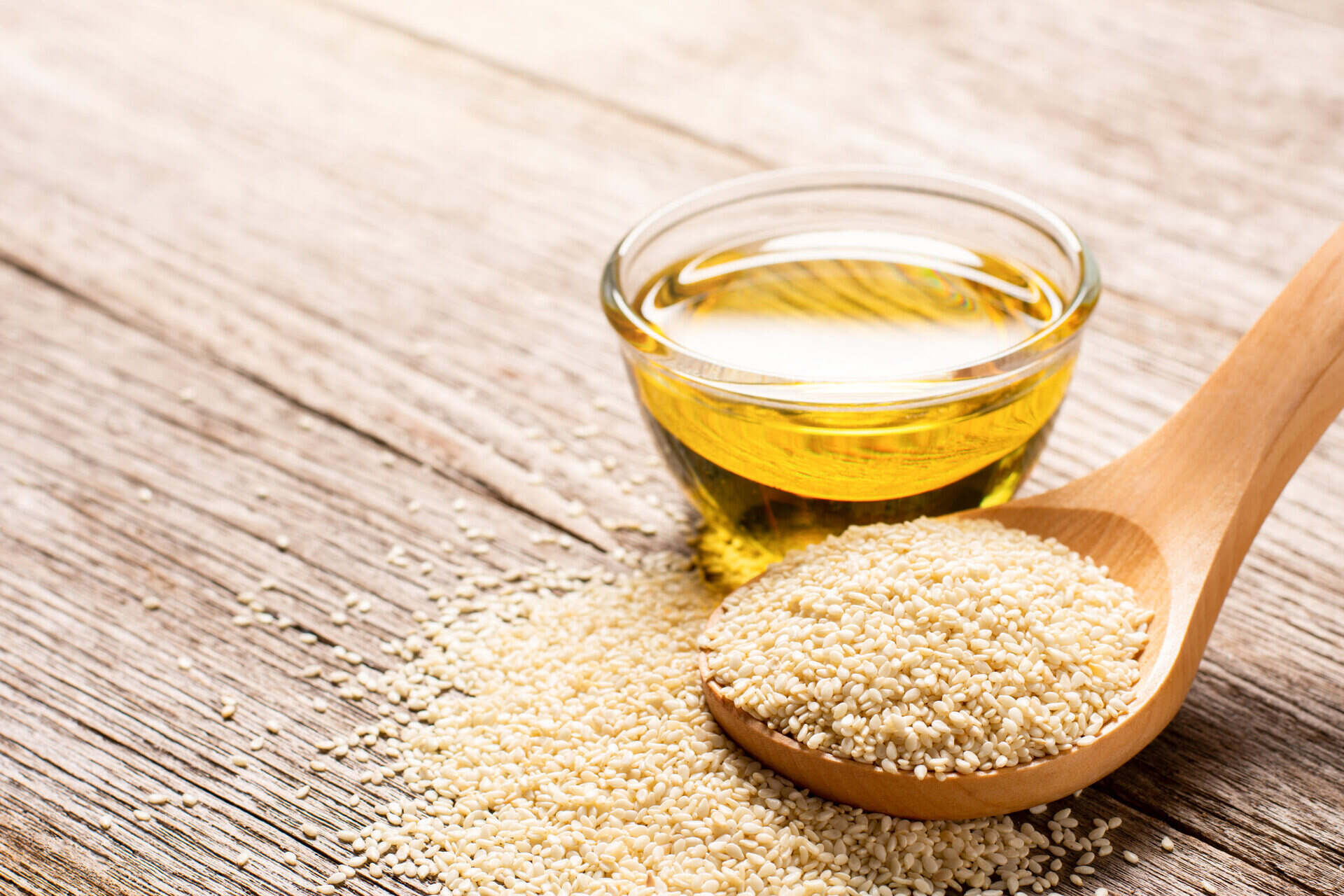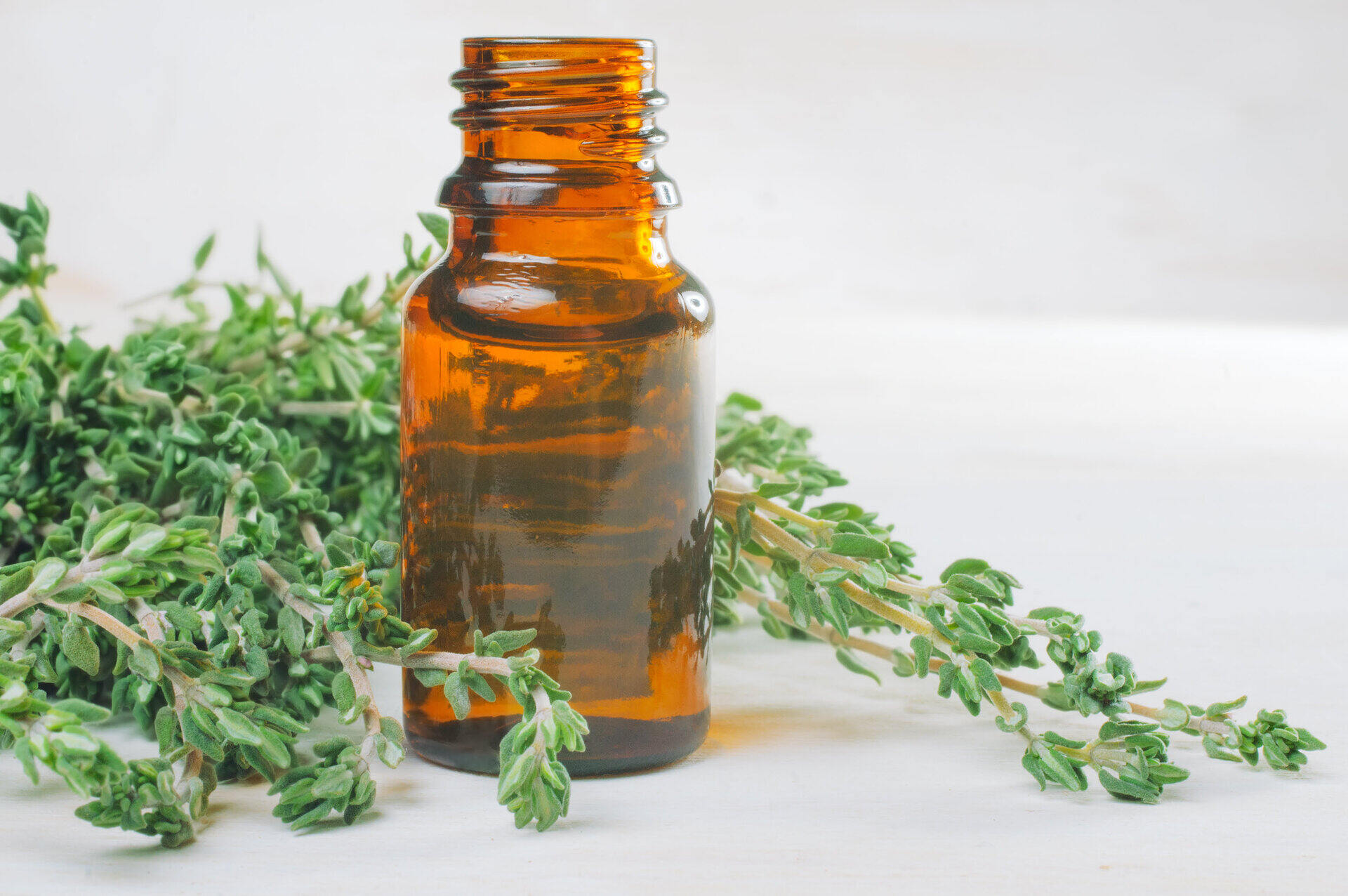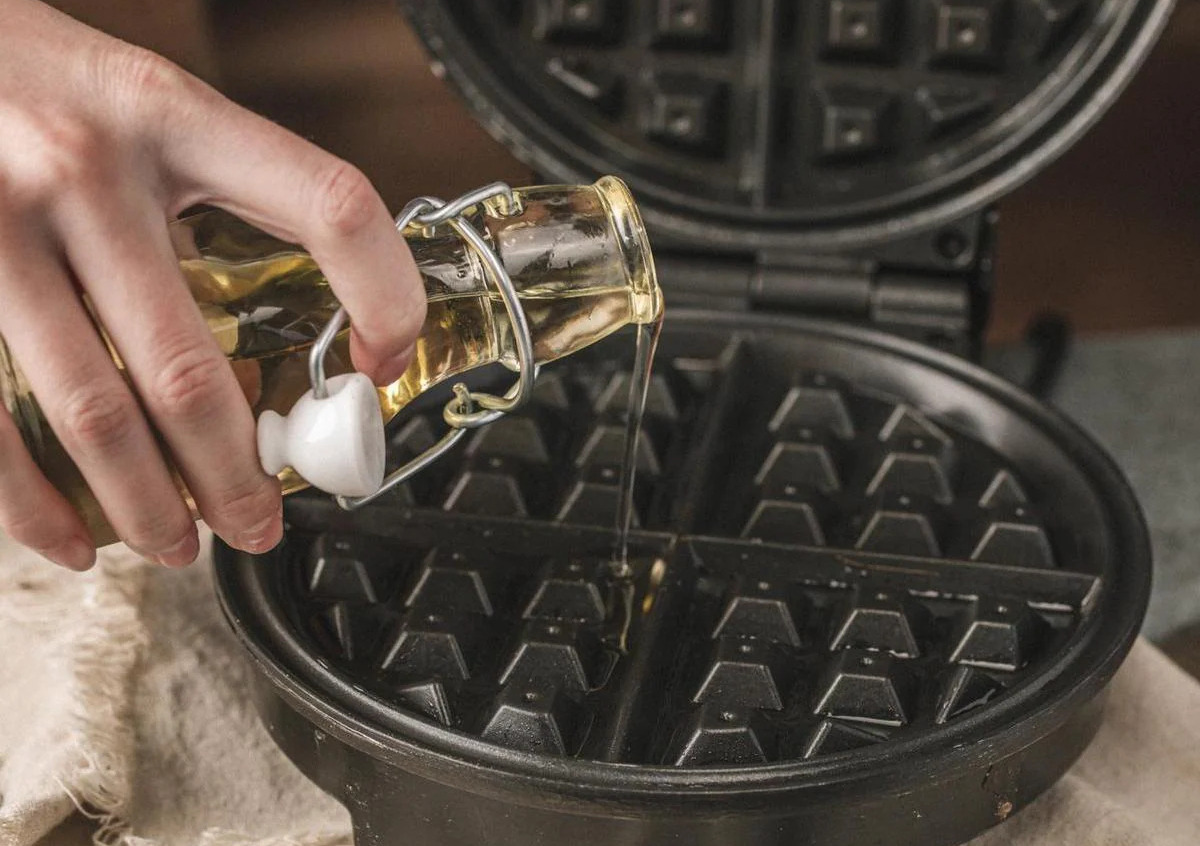

Articles
What Oil To Use In Deep Fryer
Modified: December 6, 2023
Discover the best articles on what oil to use in a deep fryer, including tips, recommendations, and guidance. Improve your frying technique today!
(Many of the links in this article redirect to a specific reviewed product. Your purchase of these products through affiliate links helps to generate commission for Storables.com, at no extra cost. Learn more)
Introduction
Deep frying is a popular cooking method that involves submerging food in hot oil to achieve a crispy exterior and a tender interior. It is commonly used for preparing a wide range of delicious dishes, from french fries and chicken wings to donuts and tempura. However, choosing the right oil for deep frying is crucial for achieving the desired results.
When it comes to deep frying, there are several factors to consider in order to ensure the best frying experience. The type of oil used, its smoke point, health considerations, and flavor profile can all impact the taste, texture, and safety of the fried food. In this article, we will explore these factors and guide you on choosing the most suitable oil for your deep fryer.
Before diving into the different types of oil and their properties, it’s important to understand the significance of the smoke point. The smoke point refers to the temperature at which the oil starts to break down and produce smoke. Using oil beyond its smoke point can result in off-flavors, a burnt taste, and even the release of harmful compounds.
Additionally, health considerations play a vital role in choosing the right oil for deep frying. Some oils contain high levels of unhealthy saturated fats, while others are rich in beneficial unsaturated fats. Selecting an oil with a healthier fat profile can contribute to a more balanced diet.
Throughout this article, we will discuss the common types of oils used in deep frying, their smoke points, and considerations for health. By understanding these factors, you will be equipped with the knowledge to make informed decisions about which oil to use when deep frying.
Key Takeaways:
- Choose oils with high smoke points like peanut oil or canola oil for crispy and flavorful deep-fried foods. Consider health benefits and experiment with different oils for the perfect fried creations.
- Practice moderation and consider health implications when selecting oils for deep frying. Experiment with oils like avocado oil and sunflower oil for a balanced and delicious deep-frying experience.
Read more: How To Use A Deep Fryer
Factors to consider when choosing oil for deep frying
When it comes to choosing the right oil for deep frying, there are several important factors to consider. Each factor plays a role in determining the overall outcome of your fried foods, ensuring both taste and safety. Let’s explore these factors in more detail:
- Smoke Point: The smoke point of an oil is the temperature at which it begins to break down and smoke. It is an essential factor to consider because exceeding the smoke point can lead to off-flavors and potentially unhealthy compounds in the food. Different oils have different smoke points, so it’s crucial to select an oil with a high smoke point for deep frying.
- Flavor Profile: The flavor of the oil can impact the taste of your fried food. Some oils, like olive oil, have a distinct flavor that may influence the overall flavor of the dish. Consider the flavor profile you desire for your fried foods and choose an oil that complements those flavors.
- Health Considerations: Deep frying is often associated with high-fat content, but not all oils are created equal in terms of their health benefits. Some oils contain high levels of unhealthy saturated fats, while others are rich in beneficial unsaturated fats. Consider the health implications of the oil you use and opt for healthier options like avocado oil or peanut oil.
- Availability and Cost: Depending on your location, certain oils may be more readily available or affordable than others. Consider your budget and accessibility when choosing an oil for deep frying.
- Stability: The stability of an oil refers to its resistance to oxidation and formation of harmful free radicals when exposed to high temperatures. Oils with high stability are more suitable for deep frying as they maintain their integrity during the frying process.
By considering these factors, you can select an oil that meets your needs and preferences, ensuring delicious and safe deep-fried dishes. In the next section, we will explore the common types of oil used in deep frying and their respective properties.
Common types of oil used in deep fryers
There are several types of oil commonly used in deep fryers, each with its own unique properties that affect the taste, texture, and safety of the fried food. Let’s take a closer look at some of the most popular types of oil used in deep frying:
- Canola Oil: Canola oil is a versatile and widely used oil for deep frying. It has a high smoke point, around 400°F (204°C), and a neutral flavor, allowing the natural flavors of the food to shine. Canola oil is also low in saturated fat and contains heart-healthy omega-3 fatty acids, making it a popular choice for health-conscious individuals.
- Peanut Oil: Peanut oil is another popular choice for deep frying due to its high smoke point of around 450°F (232°C). It has a mild flavor that enhances the taste of fried foods without overpowering them. Peanut oil is also rich in monounsaturated fats, which are considered healthy fats that can help reduce bad cholesterol levels.
- Vegetable Oil: Vegetable oil is a general term that encompasses a blend of different plant-derived oils. It typically has a high smoke point, making it suitable for deep frying. However, the exact smoke point can vary depending on the type of vegetable oil used in the blend. Vegetable oil has a neutral flavor, making it versatile for a wide range of fried foods.
- Sunflower Oil: Sunflower oil is a popular choice for deep frying due to its high smoke point and mild flavor. It has a smoke point of around 440°F (227°C) and contains heart-healthy monounsaturated fats. Sunflower oil provides a light and crispy texture to fried foods without adding a strong taste.
- Grapeseed Oil: Grapeseed oil is a relatively new contender in the world of deep frying. It has a high smoke point of around 420°F (216°C) and a mild flavor, making it suitable for a variety of dishes. Grapeseed oil is also known for its antioxidant properties, making it a healthier option for deep frying.
These are just a few examples of the common types of oil used in deep fryers. It’s important to note that the suitability of each oil may vary depending on the specific cooking method and the desired flavor profile. Experimentation and personal preference play a role in determining the best oil for your deep frying needs. In the following section, we will explore the importance of the smoke point and its impact on deep frying.
Smoke point of different oils and its importance in deep frying
The smoke point is a crucial factor to consider when choosing an oil for deep frying. It refers to the temperature at which the oil begins to break down, release smoke, and potentially produce harmful compounds. It is important to use an oil with a smoke point that is appropriate for the cooking temperature to ensure the safety, taste, and quality of your fried foods.
Here are the approximate smoke points of some commonly used oils in deep frying:
- Canola Oil: Smoke point of around 400°F (204°C)
- Peanut Oil: Smoke point of around 450°F (232°C)
- Vegetable Oil (soybean): Smoke point of around 450°F (232°C)
- Sunflower Oil: Smoke point of around 440°F (227°C)
- Grapeseed Oil: Smoke point of around 420°F (216°C)
Using an oil with a smoke point that is too low for the cooking temperature can result in the oil breaking down, smoking excessively, and imparting unpleasant flavors to the food. This can lead to a burnt taste and compromised quality. On the other hand, exceeding the smoke point of an oil can lead to the release of harmful compounds and degradation of the oil’s nutritional value. It is essential to choose an oil with a smoke point that is appropriate for the cooking temperature to ensure optimal frying results.
Additionally, the smoke point can be influenced by factors such as the quality of the oil, the presence of impurities, and the duration of frying. Reusing oil for multiple frying sessions can also lower its smoke point. It is important to monitor the frying process and avoid exceeding the smoke point to maintain the desired taste and safety of your fried foods.
When deep frying, it is recommended to heat the oil gradually and maintain a consistent temperature throughout the process. This helps to prevent the oil from reaching its smoke point and maintains the quality of the fried food. Using a deep fryer or a thermometer can help you accurately monitor and control the cooking temperature.
Understanding the smoke point and its importance in deep frying allows you to make informed decisions when choosing an oil. It ensures that you select an oil with a compatible smoke point for the cooking temperature, resulting in delicious and safely fried foods. In the next section, we will explore health considerations when selecting oil for deep frying.
When choosing an oil for deep frying, look for oils with a high smoke point such as peanut, canola, or sunflower oil. These oils can withstand the high heat of frying without breaking down and imparting off-flavors to your food.
Health considerations when selecting oil for deep frying
When choosing an oil for deep frying, it is important to consider the health implications of the oil you use. Deep frying typically involves the immersion of food in hot oil, which can result in the absorption of some of the oil into the food. Consider the following health considerations when selecting oil for deep frying:
Fat Composition: Different oils have different types of fats. Saturated fats are generally considered less healthy as they can raise cholesterol levels. Unsaturated fats, specifically monounsaturated and polyunsaturated fats, are considered healthier options and can contribute to heart health. Consider choosing oils with a higher proportion of unsaturated fats for healthier deep frying.
Smoke Point and Oxidation: As mentioned earlier, the smoke point is an important factor to consider in deep frying. Oils that have low smoke points can break down and produce harmful compounds when exposed to high temperatures, increasing the risk of oxidative damage and the formation of free radicals. Opt for oils with higher smoke points to minimize the risk of oxidation during deep frying.
Antioxidant Content: Some oils, such as olive oil and avocado oil, contain natural antioxidants that have health benefits. These antioxidants can help protect against oxidative stress and inflammation. Choosing oils with higher antioxidant content can provide additional health benefits when deep frying.
Nutrient Profile: Some oils, like avocado oil and coconut oil, contain vitamins and minerals that can provide additional nutritional value. While the amount of nutrients absorbed during deep frying is minimal, selecting oils with a better nutrient profile can still contribute to a healthier overall diet.
Portion and Moderation: Deep frying inherently involves adding extra fats and calories to food. It is important to practice portion control and moderation when consuming deep-fried foods to maintain a balanced diet. Enjoying deep-fried foods as an occasional treat rather than a regular staple can help mitigate potential health risks associated with fried foods.
By considering these health considerations, you can make more informed choices when selecting an oil for deep frying. Oils with higher proportions of unsaturated fats, higher smoke points, and additional health benefits from antioxidants and nutrients may be preferable for those seeking healthier options.
Remember, while choosing a healthier oil is important, it is also crucial to maintain a balanced and varied diet that includes other healthy cooking methods aside from deep frying. In the next section, we will discuss the best oils for deep frying based on their smoke point, flavor, and health benefits.
Read more: What Oil To Use In Air Fryer
Best oils for deep frying
When it comes to the best oils for deep frying, several factors come into play, including smoke point, flavor, and health benefits. Here are some oils that are often considered excellent choices for deep frying:
1. Peanut Oil: With its high smoke point of around 450°F (232°C) and a mild, nutty flavor, peanut oil is a popular choice for deep frying. It provides a crispy texture to fried foods and is ideal for dishes like french fries, chicken wings, and tempura. Peanut oil is also low in saturated fat and rich in monounsaturated fats, making it a relatively healthier option.
2. Canola Oil: Canola oil is another versatile oil suitable for deep frying. It has a high smoke point of around 400°F (204°C), a neutral flavor, and a relatively low saturated fat content. Canola oil is widely available and affordable, making it a practical choice for deep frying a variety of foods.
3. Vegetable Oil: Vegetable oil, typically made from blends of various plant oils, is a popular choice for deep frying due to its high smoke point and neutral flavor. Soybean oil, in particular, is commonly used in vegetable oil blends for its stability and high smoke point. It is a versatile and cost-effective option for deep frying.
4. Sunflower Oil: Sunflower oil has a smoke point of around 440°F (227°C), making it suitable for deep frying. It has a mild flavor that allows the natural flavors of the food to shine through. Sunflower oil is lower in saturated fats and rich in monounsaturated fats, providing a healthier option for deep frying.
5. Avocado Oil: Avocado oil has a smoke point of around 520°F (271°C), making it one of the highest smoke point oils available. It has a mild, buttery flavor that adds richness to deep-fried foods. Avocado oil is also nutrient-dense, containing monounsaturated fats and antioxidants, making it a healthier choice for deep frying.
While these oils are commonly recommended for deep frying, it’s essential to keep in mind that moderation is key. Deep-fried foods should be enjoyed in moderation as part of a balanced diet. Monitoring the temperature, using fresh oil, and proper frying techniques will also contribute to the overall success of your deep-fried creations.
Ultimately, choosing the best oil for deep frying depends on personal preferences, dietary needs, and the specific dish being prepared. Experimenting with different oils can help you discover the perfect combination of flavor, smoke point, and health benefits for your deep-fried delights.
With a better understanding of the best oils for deep frying, you can confidently select the right oil for your culinary adventures. In the next section, we will conclude with a summary of the key points discussed in this article.
Conclusion
Choosing the right oil for deep frying is a fundamental aspect of achieving delicious and crispy results. By considering factors such as smoke point, flavor profile, health considerations, and availability, you can make an informed decision about the oil to use in your deep fryer.
Understanding the smoke point is crucial as it determines the temperature at which the oil starts to break down and release harmful compounds. Selecting an oil with a high smoke point, such as canola oil or peanut oil, ensures that your fried foods are cooked at the appropriate temperature, resulting in a crispy and flavorful outcome.
Health considerations should also be kept in mind when selecting oil for deep frying. Opting for oils with a healthier fat composition, such as those rich in monounsaturated fats, and considering nutrient content and antioxidant properties can contribute to a more balanced and nutritious diet.
Commonly recommended oils for deep frying include peanut oil, canola oil, vegetable oil, sunflower oil, and avocado oil. Each of these oils has its own unique characteristics in terms of smoke point, flavor, and health benefits. Experimenting with different oils will allow you to discover the ideal choice for your deep-fried creations.
Remember to practice portion control and moderation when enjoying deep-fried foods. Deep frying should be a treat rather than a regular part of your diet. Other healthier cooking methods should be incorporated to maintain a well-rounded approach to eating.
In conclusion, the selection of the ideal oil for deep frying involves considering factors such as smoke point, flavor profile, health considerations, and individual preferences. By understanding these factors and experimenting with different oils, you can elevate your deep-frying game and create mouthwatering, crispy delicacies to enjoy.
Frequently Asked Questions about What Oil To Use In Deep Fryer
Was this page helpful?
At Storables.com, we guarantee accurate and reliable information. Our content, validated by Expert Board Contributors, is crafted following stringent Editorial Policies. We're committed to providing you with well-researched, expert-backed insights for all your informational needs.















0 thoughts on “What Oil To Use In Deep Fryer”